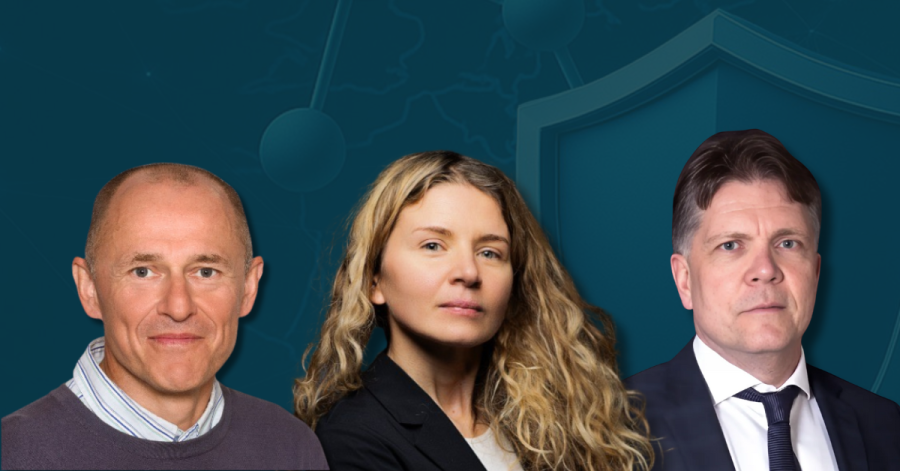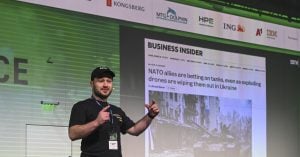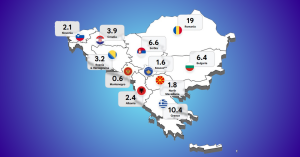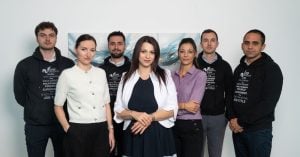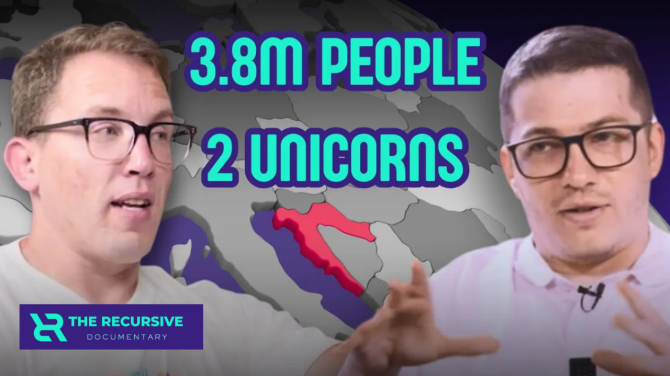By mid to late 2023, Ukrainian units repurposed low-cost agricultural drones to launch 15 kg of explosives against Russian armor. Within days, equipment built for crop analysis became an improvised artillery system. It’s not a rare example – the fast deployment of dual-use technologies in response to current challenges is far from uncommon. The stakes are higher than ever, as their use becomes increasingly critical.
Europe’s geopolitical environment – marked by Russia’s invasion of Ukraine and strategic competition in the Indo‑Pacific (in which European countries are indirectly involved) – has driven the commercialization of dual-use technologies. For example, EU member states’ authorized dual-use exports were €57.3 billion in 2022, up from €38.5 billion in 2021 – a roughly 49% year-on-year jump.
Crucially, these market shifts run alongside with deep supply-chain realignments that further shrink the interval between prototype demonstration and operational deployment. By improving the integration of R&D, manufacturing, logistics, and digital systems, Europe can shorten time-to-deployment, enabling front-line testing and fielding cycles in weeks or months rather than years under traditional procurement.
What happens then when technologies, initially developed to boost European agriculture are adapted for military use; would they really be efficient? What does history teach us about today’s efforts to integrate R&D, manufacturing, logistics, and digital systems for rapid defense deployment? Over the past century, Europe has often had the “dilemma” to balance the everyday uses of technology with its potential military impact.
Historical growth of dual-use tech in Europe
During World War I, the pioneering Haber–Bosch process, developed by Fritz Haber and Carl Bosch, was originally adopted to produce ammonia for fertilizers but it also became indispensable for munitions, supplying Germany with explosively‑active nitrates despite naval blockades. That very duality led to some of the earliest calls for controls on dual-use chemical compounds. After World War II, Western allies established CoCom (1949) to restrict technology transfers to the Soviet bloc. CoCom’s export controls covered radar components, semiconductors and nuclear technology.
Building on these wartime-era controls, the European Community formalized its own regulatory mechanisms. In 1994, the European Community introduced Council Regulation 3381/94, requiring authorizations for the export of sensitive dual-use goods. Just two years later, the Wassenaar Arrangement brought over 40 countries together to coordinate controls on arms and emerging technologies.
That concern has only intensified. By 2018, the EU had begun to identify software and biotechnology as increasingly sensitive dual-use domains. To keep pace with new threats, the EU passed Regulation 2021/821, which introduced a more flexible system that allows export restrictions on emerging or high-risk technologies – even if they’re not specifically listed. The regulatory shift was not merely bureaucratic; it was a reaction to the rising flow of sensitive tech.
Investment switch
A few years later, bolstered by the war in Ukraine, Europe’s innovation economy has become a driving force in the dual-use space. In 2023 alone, the European Investment Fund committed significant resources into dual-use and deep-tech ventures via instruments like a €25 million deep‑tech fund in CEE and a €175 million Defence Equity Facility.
In early 2025, the European Defence Fund (EDF) received an additional €1.5 billion under the Strategic Technologies for Europe Platform (STEP) for 2024–2027 to support dual-use and defense R&D.
The message was clear: in Europe, dual-use innovation is no longer balanced between civilian and military aims – it is tilting firmly toward the defense end of the spectrum. At the same time, private and public investment in this space is still drawing increased scrutiny, as policymakers and investors weigh the ethical and strategic implications of funding technologies with potential combat applications.
European sustainability-focused (ESG) funds have significantly increased their holdings in defense stocks since the war in Ukraine started, which sparked a reassessment of their traditionally strict ethical exclusions. Specifically, exposure to defense among these funds more than doubled – from approximately €3.2 billion in Q1 2022 to around €7.7 billion by Q3 2024, according to Morningstar data cited by the Financial Times.
Yet on the ground, the operational shift by companies toward battlefield-specific applications remains limited. While many companies in the region have deployable technologies, relatively few are currently tailoring their operations toward battlefield or defense-specific use. This gap, especially in times of crisis, could prove important to address.
Ambiguity surrounding dual-use technology
This lack of structural support in CEE and, increasingly, across Europe is further complicated by growing uncertainty around what dual use really means.
As the term gains currency in both policy circles and funding programs, its scope is becoming dangerously vague. EU policy frameworks and initiatives like the European Defence Fund (EDF) and Horizon Europe routinely prioritize dual-use potential when awarding grants, but many startups, particularly those working on direct military applications, find the label too broad to be useful in practice. As Jan-Erik Saarinen, founder and CEO of Double Tap Investments, notes, the ambiguity surrounding dual use can lead to misinterpretation.
“I’m somewhat fatigued by the topic of ‘dual use’ – it’s often misunderstood or misapplied. For example, someone might argue that investing in a pen factory is dual use because a pen can be used at the front. That kind of logic dilutes the real meaning of the term,” he explains.
While Saarinen acknowledges that many of the technologies his investment company backs will likely have civilian applications in the long term, his focus remains on impact: “Our goal is very clear – we are investing in tech that can help end the war as quickly as possible.”
This urgency reflects a broader shift in the perception of defense innovation. For many investors, the line between ethical and unethical is no longer defined by category, but by purpose.
Saarinen observes that just a few years ago, managing large investment portfolios often involved heated debates about the ethical boundaries of sectors like gambling, tobacco, adult content, and defense. However, he notes a noticeable shift in perspective: in today’s geopolitical climate, defense is increasingly being reconsidered through the lens of national security and humanitarian responsibility.
Kateryna Bezsudna, co-founder and CEO of Defence Builder, underscores this tension:
“The main worry is keeping critical technologies out of the wrong hands – this is where we start talking about IP protection measures. Sure, regulation can scare off some startups from entering the defense sector, but security has to come first.”
To manage these risks without stifling innovation, initiatives like Ukraine’s Brave1 cluster and Defence Builder accelerator are offering a path forward. “There are ways to deal with overregulation,” Bezsudna adds.
“Clusters like Brave1 and growing interest from both international and Ukrainian investors help startups work through regulatory hurdles while keeping security standards intact. It’s all about striking that right balance – encouraging innovation while making sure our critical tech stays secure.”
Regulatory gaps
But while investment flows into defense-aligned technologies, regulation hasn’t kept pace. “Especially when it comes to critical technologies that Europe needs to acquire quickly in order to achieve strategic autonomy, over-regulation can be a harmful factor that essentially presents a barrier to market access for smaller players and defense startups,” says Peter Kováč, a specialist in Defense & Security at SAP, who focuses on AI development in the defense sector.
“Such smaller companies can be Europe’s competitive advantage over the rest of the world, provided that it can fully harness its innovative potential.”
This tension is even more pressing in Central and Eastern Europe, where a new generation of defense-focused startups is emerging from countries like Poland, Romania, and the Czech Republic. Yet despite growing momentum, many of these ventures encounter practical hurdles. Regulatory complexity, evolving legal frameworks, and limited access to defense-focused investment continue to challenge the growth of dual-use startups in the region…
“Founders here are building serious technology,” explains Leos Mauer, Czech NATO DIANA Accelerator Lead. – “But they’re operating in a system that wasn’t designed for speed, equity flexibility, or cross-border dual-use growth.”
Not a dilemma anymore
The dual-use dilemma is no longer theoretical. Europe must walk a tightrope between innovation and security. Failing to manage dual-use risks could lead to strategic vulnerabilities; overregulating could stifle the very innovation needed to ensure sovereignty.
Smart, responsive regulation is key. This involves improving export control coordination, providing better support for defense-related startups, and encouraging international collaboration.
Now is the time for Europe to act decisively. The path is complex, but the stakes are too high to ignore.

